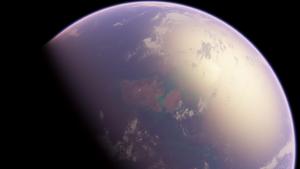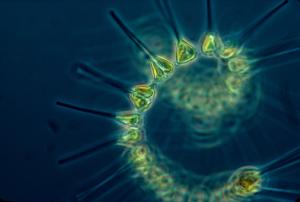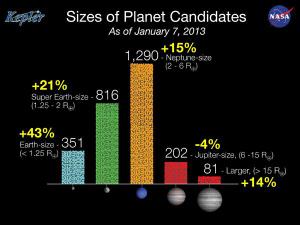Blog
Life As We Know It
13 September 2023
 Oleg Kuznetsov
Oleg KuznetsovRecently I wrote about the discovery of a hycean world. A potentially habitable exoplanet with a deep warm ocean and thick, hydrogen-rich atmosphere.1 Such planets are thought to be somewhat common orbiting red dwarf stars, and they are an excellent candidate for life. While it’s an exciting discovery, buried in the research article was something even more exciting. Tentative evidence of a biosignature, hinting at the presence of life. You can guess which discovery started making headlines. But have astronomers really found life on another planet?
The evidence comes via the atmospheric spectra of the hycean world. Buried in the noise of spectral lines is what seems to be a weak signal of dimethyl sulfide, (CH3)2S or DMS for short. On Earth, this compound is almost entirely produced by phytoplankton in our oceans, so it’s quite possible that DMS in the atmosphere of this distant world is also produced by life. It’s an incredibly exciting possibility. In the research article, the authors are careful not to overplay this result, for good reason.
 NOAA MESA Project
NOAA MESA ProjectFor starters, the signal is not particularly strong. The result is at about 2σ, or a 98% confidence level. That’s confident enough for a casual bet among friends, but scientists generally prefer much stronger data. Around 5σ, or a 99.99994% confidence level. You might remember the recent discovery of phosphine in the atmosphere of Venus, which likewise hinted at life. A closer examination overturned that result, then another study seemed to support it, and the result still lingers in “maybe.” The last thing a scientist wants is to make a bold claim only to have it overturned in a couple of months.
However, the team will be gathering more data, which will either confirm or exclude the DMS result. For the sake of argument, let’s suppose they find absolute conclusive proof that this water world contains DMS in its atmosphere. Forget 5σ, let’s assume 100% certainty. Would that then prove that there’s life on another planet?
No.
Headlines about extraterrestrial life are going to start coming fast and furious in the near future, largely because we are now at the point where we can observe the atmospheric spectra of exoplanets. We’re starting to get good at it, and that means we’re going to find evidence of what we call biosignatures.
A biosignature is a chemical compound that is a byproduct of living organisms. It sounds like a simple concept, but it’s actually very complex because there are two issues with biosignatures. The first is that we only have one data set for them. Life on Earth. The second is that atmospheric chemistry is complex, and most biosignatures also have abiotic origins.
Take, for example, Earth’s atmosphere. It has water vapor, indicating Earth is wet, and it is about 20% oxygen. Water is necessary for terrestrial life, and our atmospheric oxygen is entirely due to life. So if we see water vapor and lots of oxygen in an exoplanet’s atmosphere, that would seem to be a slam dunk. But it’s not, since oxygen can be produced purely geologically. It just isn’t on Earth. The same is true for methane, phosphine, and DMS. On Earth, these are produced by living things, but there are also other ways. So a single organic molecule will never prove the presence of life. What if we find DMS but no oxygen? How about chlorophyll but no water?
The reality is that there will likely not be a single conclusive result about a single exoplanet. It will be a slow gathering of data that becomes ever more conclusive. And we are likely going to be very surprised by the result.
 NASA
NASAIn the early days of exoplanet hunting, one of the big goals was to find a “second Earth.” A planet of Earth-size and Earth-mass orbiting a Sunlike star at about Earth’s distance from the Sun. It would have shown that Earth isn’t rare, and therefore that life may not be rare. But we never really found such a world. What we did find is that Earth-sized worlds aren’t particularly common. Super-Earths are twice as plentiful. And most potentially habitable worlds don’t orbit Sun-like stars, but rather small red dwarfs. So rather than other Earths, the most likely home for life as we know it is a large hycean planet orbiting a red dwarf.
Unfortunately, our solar system doesn’t have a super-Earth, much less a hycean one. While it’s possible that their oceans are filled with life similar to phytoplankton, octopi, or the creatures of the Cambrian explosion, it’s also possible that giant purple jellyfish whales ply their waters. There may be complex chemistry that produces organic compounds without life, or there may be living creatures that exude molecules we don’t expect.
The good news though is that we are now starting to gather real data, so there will be plenty of evidence for scientists to argue over as we try to answer one of humanity’s biggest questions: are we truly alone in the cosmos?
Nikku Madhusudhan et al. “Carbon-bearing Molecules in a Possible Hycean Atmosphere.” Presented at The First Year of JWST Science Conference (2023) ↩︎